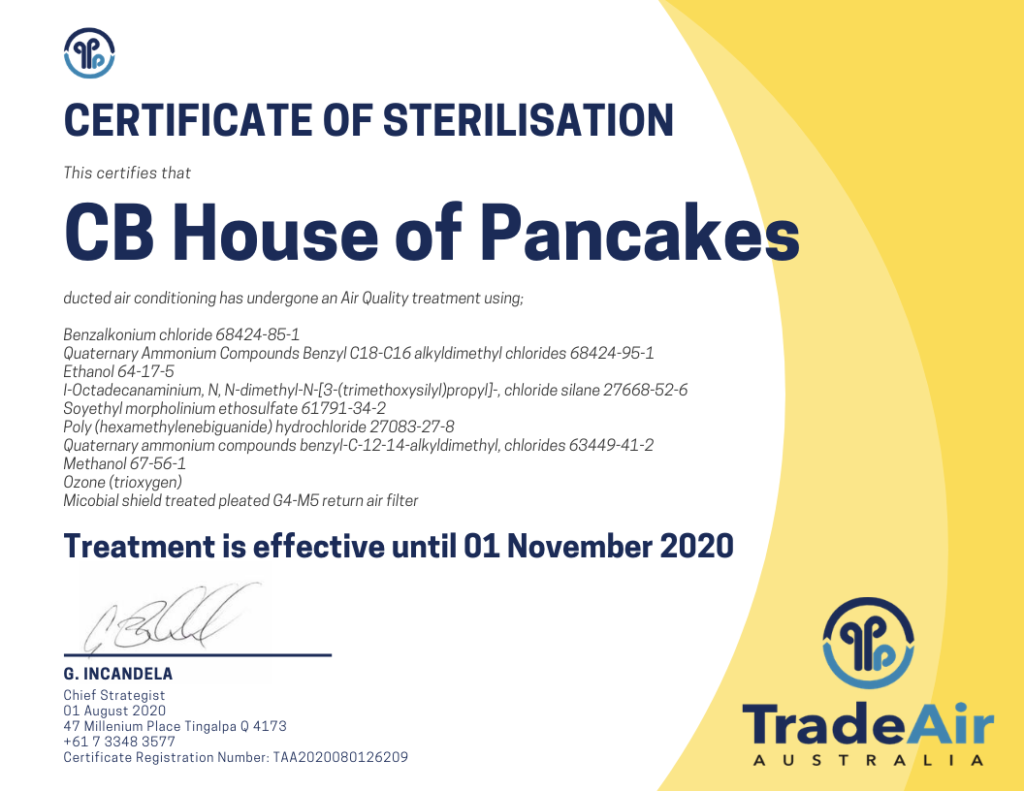Is the air conditioner your friend or foe during the coronavirus pandemic?

New evidence about how the virus that causes COVID-19 is transmitted was released by the World Health Organisation (WHO) on 09 July 2020 in their scientific brief. In summary WHO can no longer rule out airborne transmission as a possible mode of infection.
What is airborne transmission?
Airborne contaminants (also known as bioaerosols) like bacteria, viruses or fungi as well as airborne toxins pass from one victim to the next through the air, without physical contact, causing irritation at the very least. (Earth Materials and Health, pg. 43).
This new information has lead the European Federation of European Heating, Ventilation and Air Conditioning Associations (REHVA) to revise and release a guide on 06 August 2020 on how to operate air conditioners in the workplace to prevent the spread of the coronavirus.
-Is the beloved air conditioner making us sick or can we use this to help prevent the transmission of COVID-19?-
Depending on the HVAC system (Heating, Ventilation, and Air Conditioning), the REHVA advice should be treated as interim guidance; the document scope is limited to commercial and public buildings (e.g., offices, schools, shopping areas, sporting premises, etc.) where only occasional occupancy of infected persons is expected.
In summary, the REHVA states,
…new evidence on SARS-CoV-2 airborne transmission and general recognition of long-range aerosol-based transmission has developed recently. This has made ventilation measures the most important engineering controls in the infection control. While physical distancing is important to avoid close contact, the risk of an aerosol concentration and cross-infection from 1.5 m onward from an infected person can be reduced with adequate ventilation and effective air distribution solutions.
Key evidence contained in the REHVA document include;
- The airflow generated by air conditioning units may facilitate the spread of infected droplets longer distances within indoor spaces.
- Well-maintained ducted air conditioning system securely filters large droplets containing SARS-CoV-2.
- Ducted air conditioning systems and stand-alone air conditioning units (wall split units etc.) that recirculate the indoor air can spread COVID-19 aerosols (small droplets and droplet nuclei).
- The use of air recirculation should be avoided as much as possible.
The guide to operating HVAC systems to prevent the spread of the coronavirus are summarized as follows;
Increase fresh air supply and exhaust ventilation
Supply as much outside air as reasonably possible through indoor areas.
Use openable windows more
Stay away from crowded and poorly ventilated spaces and where possible actively use openable windows.
Humidification and air-conditioning cooling have no practical effect
The coronavirus is susceptible only to a very high relative humidity above 80% and a temperatures above 30˚C both are which are not attainable and acceptable in active commercial buildings.
SARS-CoV-2 has been found viable for 14 days at 4℃; for a day at 37℃ and for 30 minutes at 56℃.
Safe use of heat recovery sections
It has been shown that rotary heat exchangers which are properly constructed, installed, and
maintained have almost zero transfer of particle-bound pollutants (including air-borne bacteria, viruses, and fungi).
No use of central recirculation
Avoid central recirculation HVAC systems during coronavirus outbreaks.
If this is unavoidable, it is recommended where possible, to change the traditional return air filter panel with a higher class filter (in existing frames is preferred) and to increase exhaust fan pressure without reducing the airflow rate.
Alternatively, installation of ultraviolet germicidal irradiation (UVGI) also called germicidal ultraviolet (GUV), may be used effectively.
Room level circulation: fan coil, split and induction units
Outdoor air ventilation is a priority in rooms with fan coil only or split units.
Fan coil units have coarse filters that practically do not filter smaller particles but may still collect potentially contaminated particles which may then be released when fans start to operate.
Indoor Air Quality monitoring
It is recommended to install CO2 sensors that warn against underventilation, especially in spaces that are often used for one hour or more by groups of people, such as classrooms, meeting rooms, and restaurants.
Duct cleaning has no practical effect
Duct cleaning is not effective against room-to-room infection because the ductwork system is not a contamination source if the guidance about heat recovery and recirculation is followed.
Viruses attached to small particles will normally be carried out of ductwork by the airflow.
Change of outdoor air filters is not necessary
Clogged filters are not a source of contamination in this context, but they do reduce supply airflow, which has a negative effect on reducing indoor contamination levels.
Safety procedures for maintenance personnel
To be safe, filters should be checked and/or changed with the HVAC system turned off, while wearing gloves and respiratory protection and disposed of in a sealed bag, especially in buildings where there has been a recent infection.
Air purifiers and UVGI can be useful in specific situations
Air purifiers remove particles from the air, which provides a similar effect compared to the outdoor air ventilation. To be effective, air purifiers need to have HEPA filter efficiency. Unfortunately, most attractively priced air purifyers are not effective enough.
Risk of Legionellosis after shut-down
Depending on a variety of factors, including system layout and design, prolonged reduced (or no) use of HVAC systems can lead to water stagnation, enhancing the risks of an outbreak of Legionnaires’ disease (Legionellosis) upon reassuming full operation.
Before restarting the system, a thorough risk analysis should be carried out to assess any Legionellosis risks involved.
How can we help…
Trade Air Australia have practical solutions for most HVAC system operations during and post the coronavirus pandemic that addresses the REHVA evidence on the COVID-19 impact on air conditioners in the workplace.
Our Air Quality solution is recommended to be in conjunction with your regular maintenance schedule – not to replace. Should you require a risk analysis prior to resuming HVAC operations, we will be happy to arrange an appointment on your behalf with a trusted technician in your area.
Air Quality solution
Obligation-free initial site assessment to ensure optimal solution delivery.
A disposable pre-treated, pleated return air filter using an exclusive microbial shield treatment to control bacteria growth lasting 3-6 months dependant on the frequency of HVAC use, and a filter over 10 times smaller when compared to a traditional panel filter.
Chemical fogging of the indoor unit using a US EPA approved listed antibacterial, antiviral and antifungal solution effective against the Human Coronavirus to treat contaminates on the evaporator coil.
Ozone treatment of the indoor unit using Trioxygen to treat mould spores and stop growth on the evaporator coil.
Clean and treat the diffusers with a US EPA approved listed antibacterial, antiviral and antifungal solution effective against the Human Coronavirus to treat contaminates and an exclusive microbial shield treatment to control bacteria growth lasting 3-6 months dependant on the frequency of HVAC use.
Certificate of Sterilisation listing the solutions used to treat the HVAC system to be displayed within the entry to give peers and patrons peace of mind

Air Quality optional additions
Ultraviolet germicidal irradiation (UVGI)
Short-wave ultraviolet lights are installed within the HVAC system unit to kill virus’, bacteria and fungi upon contact.
Fresh Air Intakes
Fresh air intakes are installed within the HVAC system to add fresh air to improve indoor air quality.
